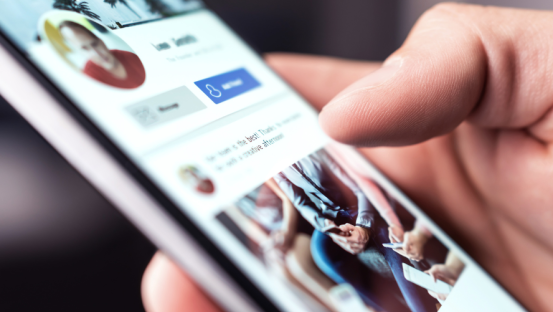How to Write Engaging Cold Emails That Will Get You Speaking Engagements in 2024

Did you know that most people tend to form a first impression even before the presenter starts speaking? As it takes 27 seconds on average to create the first impression, it is important to look your best.
That can also apply to cold emails – one of the best methods to find speaking engagements. Yet, too often, speakers send generic and uninspired cold pitches that get ignored or lost in the spam folder.
That can be countless potential insights, ideas, and impact going unshared. But it doesn’t have to be that way. By mastering the art of crafting engaging cold emails, your pitches have the potential to get much more engagement.
Let’s learn how to create engaging cold emails that land speaking engagements for any event.
What is a Cold Email?
All unsolicited emails from senders with whom you don’t have a prior relationship are considered cold emails.
A cold email should pitch an idea, product, or service – or, in this case, your expertise as a speaker.
Since you don’t have an existing connection with a recipient, crafting a compelling email copy is essential for grabbing attention and engaging the reader.
As only 8,5% of cold emails receive a response, outlining a message in an engaging and valuable manner is essential. When done well, cold emails can be an incredible way to land speaking opportunities at your ideal conferences and industry events.
Email Copywriting Best Practices to Get Speaking Engagements
Effective cold email campaigns rely heavily on persuasive copywriting that:
-
Immediately establishes relevance and value for the recipient.
-
Communicates a clear and compelling benefit.
-
Provides credibility and social proof.
-
Ends with a specific and achievable call to action.
Let’s break down even more email copywriting best practices and start landing those speaking engagements.
Building a Focused Recipient List
Don’t randomly blast the same generic pitch email to everyone. That is an easy way to get ignored or sent to the spam folder.
Curate a targeted list of prospects who are likely to value your expertise and perspective as a speaker.
First, thoroughly research relevant conferences, meetups, networking groups, and organizations within your specific niche or industry. Online resources like SpeakerHub can greatly streamline this process as they allow you to find organizers and events with a wide range of filters.
Next, find the key decision-makers involved in selecting speakers or planning event lineups. Let’s say you are a video game designer and looking for conferences where you could share your video game design philosophy. Upon searching on SpeakerHub, we found some good matches:
Let’s dive into “Games for Change”. To find decision-makers, you could use any of the following methods:
-
Search for a website on a search engine of preference and look for employee information there.
-
Find the company on LinkedIn and check employee information there.
You can repeat the process to fill up your list with relevant recipients. The more fitting the list is, the easier it will be to develop an email copy that directly resonates with that audience.
Segmenting Your Email List
Once you have a sizable prospect list, the next steps are to segment and clean the email list. This allows you to tailor your messaging to valid email addresses.
Here are some ways to do this:
-
By specific industry/niche
-
By role and seniority level
-
By company size, stage, and growth
-
By geographic region or market
For example, you could make different buckets, such as:
-
Community managers in California
-
PR managers in Europe
Whether you go broad or specific, you have to ensure each email is valid with a proper email verification tool. This can give you confidence that your emails are delivered to the right person. A higher than 2% bounce rate can hurt your sender's reputation and land your emails in spam folders.
Making Cold Emails Personal
One of the common mistakes when sending cold emails is forgetting that there is an actual person on the other end of the message.
Multiple personalization email fields can improve reply rates by 142%. Ensure that each email reads as if it was tailored exclusively for a specific individual.
You can personalize emails in numerous ways:
-
Use their name and current role or company in the greeting.
-
Reference a recent accomplishment or campaign they managed.
-
Mention a piece of content they created that you found interesting.
-
Outline a common thing you both share (might be a hobby).
Instead of doing something generic like this:
It’s better to personalize your email message:
By seamlessly integrating relevant details for each prospect, you signal to them that you did your research. That will make them keen to invest more of their precious attention in your cold email.
Crafting Subject Line for Maximum Open Rates
The subject line is one of the most important cold email components, as 33% of people open emails based on them.
Because of that, you want to ensure your subject lines are clear, engaging, and relevant to attract your prospects. You should also arouse curiosity with an urgent tone in your subject line.
In essence, the goal of your subject line should be to set expectations for the content of your cold email. It should naturally lead to the bulk of your cold email copy.
Here are a couple of examples that follow the mentioned tips:
-
{{first_name}}, I’ve been dying to tell you about this unique speech idea for XYZ conference.
-
With my XYZ expertise, I can deliver a blockbuster session at your {{company}} conference.
-
Looking to educate your audience on how {{technique}} can increase leads in {{industry}}.
A/B Testing to Enhance Email Performance
Sometimes, the most effective way to optimize your email copy is to test different variants. A/B testing allows you to experiment with different variations to see what generates better engagement and conversion metrics.
Before testing, remember to perform it on one variable at a time. You want to be certain about which variable made a specific impact.
You could test out the following variants:
-
Subject line A (“What if public speaking felt easy?”) vs. B (“The one tip for destroying stage fright”)
-
Opening line A (telling a story hook) vs. B (getting straight to the point)
-
Call-to-action A (briefing call) vs. B (requesting more information)
Remember, each cold email campaign is a work in progress. Once you have the insights, you can continuously optimize and focus on the highest-performing email copy.
Writing Effective Follow-up Emails to Increase Engagement
Don’t make the mistake of thinking your job is done after sending the first cold email.
Cold email campaigns are most successful if done in sequences, suggested by the fact that following up multiple times can double your cold email response rates.
However, you shouldn’t just send the same email copy each time. That is going to derail your outreach opportunity and potentially get your emails labeled as spam.
Effective follow-ups should aim to:
-
Add value by sharing a relevant resource, or a speaking reel that showcases your understanding of the event topics.
-
Introduce new context about why your proposed speaking topic is relevant for their audience.
-
Propose alternative session ideas or speaking opportunities if the original event is no longer feasible.
For example, here is how you could open a follow-up email for a speaking opportunity, by sharing value:
Additionally, you could touch on an interesting topic in a certain industry that is relevant to the event’s audience:
Follow-ups should build desire and not bother your recipients. If someone declines, move on to the next prospect on your email list.
Ensuring Your Cold Email Campaigns Are Legally Compliant
There has been a much heavier emphasis on data privacy in recent years when doing cold email campaigns. Failing to comply with laws such as Controlling the Assault of Non-Solicited Pornography And Marketing (CAN-SPAM) and General Data Protection Regulation (GDPR) can result in costly fines and penalties.
Under CAN-SPAM and GDPR, the following needs to be implemented in your cold email campaigns:
-
Use of non-deceptive subject lines and header info.
-
Clear opt-out/unsubscribe options.
-
Users need to consent to receive your emails.
The first two items are clear enough, but how do you get consent from people to receive your emails? If you found the prospect’s email on a publicly available source, such as LinkedIn or their website, they already consented to receive emails from various sources.
Don’t try to avoid these regulations for short-term gains. Transparently follow them and treat your cold email campaigns with integrity.
Writing Subject Lines That Demand to Be Opened
Since subject lines can make or break your cold email efforts, it’s worth knowing how to leverage psychology to improve your subject lines.
There are a couple of subject line tactics that use human psychology to attract the recipient to your emails:
Curiosity gaps: Curiosity can be a powerful motivator, and tapping into the gap between what your recipients know and want to learn can engage them.
Being controversial: This works by having knowledge of the recipient’s beliefs and being contrarian to them to an acceptable degree. You can captivate recipients with this tactic as easily as you can detract them from opening your email.
Asking questions: While some don’t find questions as enticing as others in subject lines, some question types stand out. People love to answer questions regarding topics they are passionate about or are relevant to them.
An effective subject line should feel like a cliffhanger ending to an episode of your favorite TV show. It has to leave just enough intrigue but only share some of the answers to make the recipients interested in the rest of your email.
Starting Your Cold Email Strong
Once you captivate a prospect to open your email, you need to maintain that engagement in your email opening. After all, why did you go through all that work just to let the prospect bounce?
Here are a couple of tactics on how to properly start your cold email copy:
Start with a story: Kick things off by telling a brief and relatable anecdote that instantly pulls the prospect into the narrative. If you make it contextually relevant, this can entice the prospect to consider your offer.
Use a surprising fact: You can engage the prospect by opening with a surprising statistic or little-known facts that can disrupt their expectations. This naturally engages the recipient to read more of your email.
Add a direct benefit: Get straight to the point and outline a clear reason why you are ideal for the desired speaking engagement. Focus on your area of expertise and strengths and clearly communicate them.
By embracing these tactics, you position yourself as a uniquely compelling addition to a desired event, hooking your prospects into wanting to learn more.
Closing Your Cold Email with a Persuasive Call to Action (CTA)
You’ve spent the entire cold email engaging the reader, sparking their curiosity, and showcasing value and credibility. The thing missing is the CTA that lets the reader know the next step in the process.
Here are a few tips on how to stick the final landing with your cold email:
Set a simple next step: Simply invite the prospect to a quick, no-pressure conversation to explore potential opportunities. The goal is not to induce stress in the recipient.
Offer easy outs: Make it clear you’re not obliging the recipient to a long-term deal – just their initial thoughts on the idea. Give them an easy way out.
Emphasize unique benefits: Subtly remind the recipient about the unique benefits you can bring to the speaking engagement, something that differentiates you from other speakers.
When you make it clear what you’d like the prospects to do and reinforce the benefits for them, you will set up your cold email campaigns for success.
Winning Cold Email Template Examples
To bring all of these best practices together, let’s showcase a few cold email templates that effectively implement these strategies.
Template #1: Direct Benefits and Showcasing Strengths
This template focuses on what you can bring to the table for the event organizers.
Template #2: Sparking Curiosity and Social Proof
This template arouses curiosity and then top it off with your experience as a speaker.
Template #3: Intriguing Question with Social Proof
This template focuses on arousing curiosity with a question and follows up with a showcase of the benefits you offer.
Conclusion
Crafting engaging cold emails that will get you speaking engagements can be challenging at times. However, certain tactics can drastically improve your cold outreach success rates.
To summarize, your cold email campaigns for getting speaking engagements should:
-
Have a focused list of relevant recipients
-
Be personalized, not generic
-
Be legally compliant
-
Include a clear and engaging subject line
-
Showcase your value to the recipient in a compelling manner
-
Have a persuasive call to action
About the author:
Antonio Gabric is an outreach manager at Hunter. For the last three years, he’s been helping SaaS companies grow their organic traffic and revenue through link building. At Hunter, Antonio is leading a link-building and outreach team to build backlinks that move the needle and connect with industry leaders. To get in touch and follow his experiments, say hi on LinkedIn.





